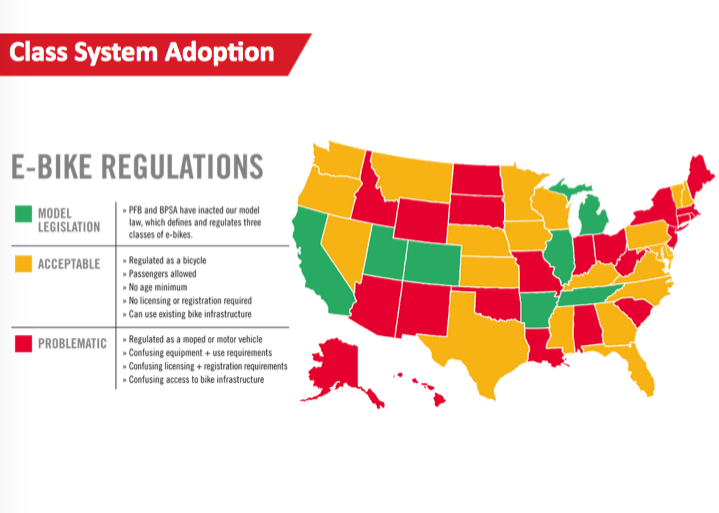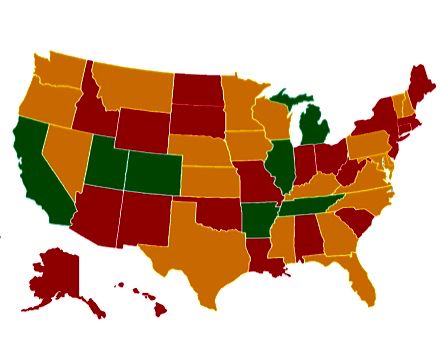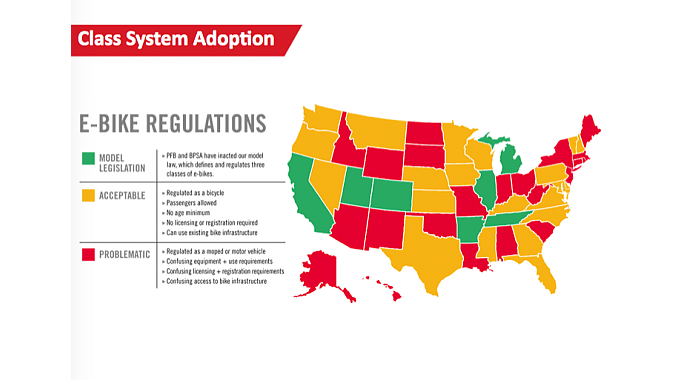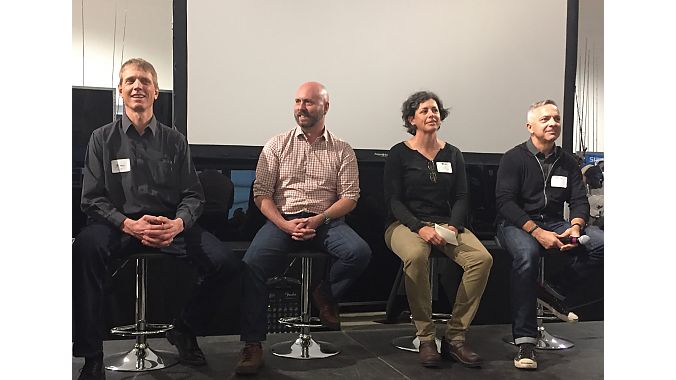IRVINE, Calif. (BRAIN) — Expanding trail access for e-MTBs, how to market e-bikes to grow category awareness, and overcoming lingering hurdles of selling e-bikes at traditional bike shops were among the key topics at the BPSA PeopleForBikes E-Bike Summit held at Shimano's Irvine offices last week.
In its fifth year, the annual e-bike gathering drew more than 100 attendees, with both IBDs, e-IBDs, bike brands and battery/motor manufacturers sending staff.
Rob Kaplan, vice president of Raleigh Electric, estimated that some 1,500 to 2,000 dealers sell e-bikes in the U.S. out of about 3,900 specialty bike shops. "And a lot of retailers are having good success," he said, kicking off a breakout that included table discussions on how to engage retail and gain IBD support for e-bikes.
Some of the ideas that came out of that brainstorming session from attendees were:
• Coming out with lower-priced e-bikes
• Standardization of components (firmware and tools) on e-bikes
• Doing "empathy training" for shop staff
• Developing demo and ambassador programs for shop staff and customers
• Targeted efforts from manufacturers to educate consumers
Chris Cherry, associate professor at the University of Tennessee, shared some early findings from a 2017 survey of e-bike owners. The full report will be available in early 2018. Cherry said the research showed that two-thirds of e-bike trips were displacing car travel. "We're displacing a lot of vehicle miles traveled by car," he said.
Not surprisingly, the survey showed that most owners are over 55 years of age, mostly male, of high income brackets and white. "You can say there's a big opportunity for a younger market," Cherry said. There's also a major opportunity for IBDs. Cherry said two-thirds of respondents bought their e-bikes from online sellers or from specialty e-bike shops. Only 16 percent bought an e-bike from a conventional independent bike shop.
Most people go to the internet to research e-bikes before buying, then go to retail and test ride events. And brand name was not as important as price, type of assist or battery range, Cherry said.

The summit also had three presentations/panels on e-MTBs and trail access. Dave Wiens, IMBA's executive director, delivered a tough message to a crowd of emboldened e-bike suppliers: "It's important that we're careful how we do things," he said. "I'd love to see mountain bike access as well as e-MTB access be healthy for long time in the future. It's important we have information, communication and collaboration and that we strike a balance between marketing and selling bikes and being responsible."
Unlike with pavement e-bikes, where a three-class system is being adopted across various states to grant e-bikes access to paths where unassisted bikes are, on dirt the question of access is complex. While e-MTBs on U.S. Forest Service and Bureau of Land Management land are treated as motorized vehicles, their access on state, county, municipal and other nonfederal land varies widely.
It's such a new category that many park rangers and land managers haven't created local policies for them. And many riders, and retailers, are unaware about access issues or what local trails these bikes are allowed on.
Leslie Kehmeier, who heads e-MTB mapping and research for PeopleForBikes, has begun cataloging trails that are open to e-MTBs, including OHV trails, on a database. She said there are more than 42,000 miles of trails across the U.S., and the database is growing daily. Most of the information is crowdsourced from riders and dealers. Kehmeier said e-bike suppliers and retailers can easily embed the map on their websites to let riders know where they can go.
Aside from cataloging, Kehmeier is also leading efforts to educate and provide resources for land managers about e-MTBs. These have included land manager demo programs and working with them on "Where to Ride" campaigns and policies. PFB is also working on specific area guides and is working with IMBA on etiquette guidelines.
The process of getting e-MTB policy about access in place isn't easy, with more than 2,000 land agencies to work with nationally, Kehmeier said. "There's a lot to deal with and a lot of people to provide outreach to and education. Policies have a process and require patience. And policies will start at the local level," she said.

IMBA's Wiens said that while the nonprofit has softened its stance about e-bikes to be supportive of Class 1 e-MTB access on nonmotorized trails, or bikes that are pedal assist only up to 20 mph, the group is also recommending creating a new category of trail classification for Class 1 e-MTBs.
"We can tell the feel-good stories, but we have to understand that these bikes will be used in sporty ways too, so creating a different category would give land managers options. It's a common-sense approach," he said.
Wiens said Moab is already doing something similar, using new classifications for UTVs (utility terrain vehicle) — which aren't ATVs or jeeps — but were appearing in greater numbers on trails. "The land management agency gave them a new category," he said.
This new classification would be especially useful in certain states and regions where trails are already at capacity, he added. "The pool is getting full," Wiens said.
As far as the industry's role in educating riders and dealers about e-MTBs and where to ride them, panelists agreed that the responsibility falls on suppliers and retailers to educate consumers, not just land managers or park rangers, to ensure riders aren't unknowingly poaching or riding illegally on trails not open to e-MTBs.








